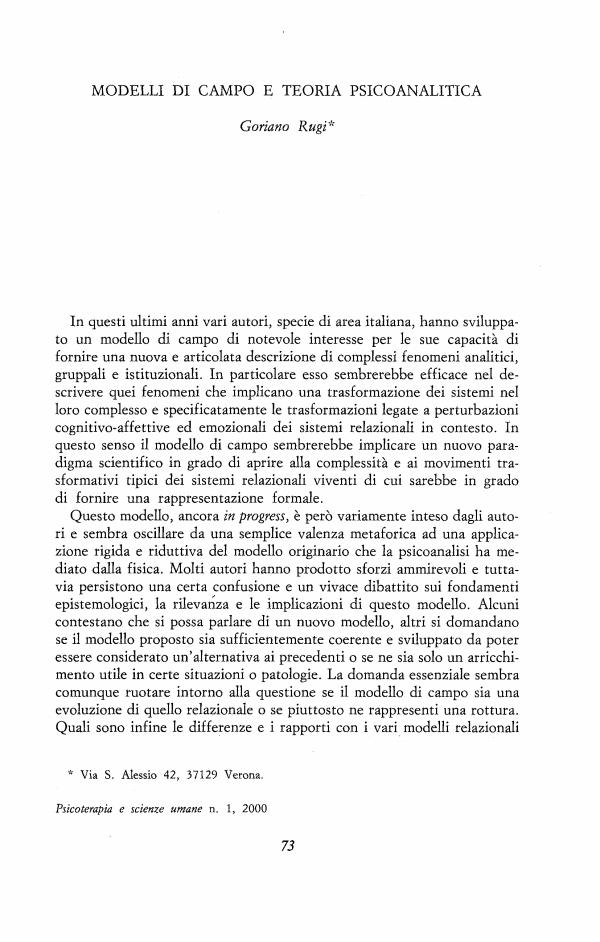Modelli di campo e teoria psicoanalitica
Titolo Rivista PSICOTERAPIA E SCIENZE UMANE
Autori/Curatori Goriano Rugi
Anno di pubblicazione 1 Fascicolo 2000/1 Lingua Italiano
Numero pagine 21 P. Dimensione file 1112 KB
DOI
Il DOI è il codice a barre della proprietà intellettuale: per saperne di più
clicca qui
Qui sotto puoi vedere in anteprima la prima pagina di questo articolo.
Se questo articolo ti interessa, lo puoi acquistare (e scaricare in formato pdf) seguendo le facili indicazioni per acquistare il download credit. Acquista Download Credits per scaricare questo Articolo in formato PDF

FrancoAngeli è membro della Publishers International Linking Association, Inc (PILA)associazione indipendente e non profit per facilitare (attraverso i servizi tecnologici implementati da CrossRef.org) l’accesso degli studiosi ai contenuti digitali nelle pubblicazioni professionali e scientifiche
Modelli di campo e teoria psicoanalitica ABSTRACT: After having underlined similarities and differences towards the originai concept of psychological field expressed by Lewin, the author examines the present psychoanalytic descriptions of the field model, which seems to differ deeply in their psychoanalytic theories of reference despite the existence of a number of epistemological roots shared with the first mode!. Then, the author tries to set a difference between the field mode! referring to the theories of intersubjectivity and the one emerging from the theory of transformations and of group development, elaborated by Bion. The present evolution of the field mode!, proposed by Corrao, Gaburri and Riolo, up to the narratologic conception offered by Ferro, are then examined. This last mode! is studied as regards the invariants whieh distinguishes it from the originaI psysical mode! of the quantum theory of the fie!d. Finally, the limitations of a global conception of fie!d, coincident with its narrative transformations, are discussed;
Goriano Rugi, Modelli di campo e teoria psicoanalitica in "PSICOTERAPIA E SCIENZE UMANE" 1/2000, pp , DOI: